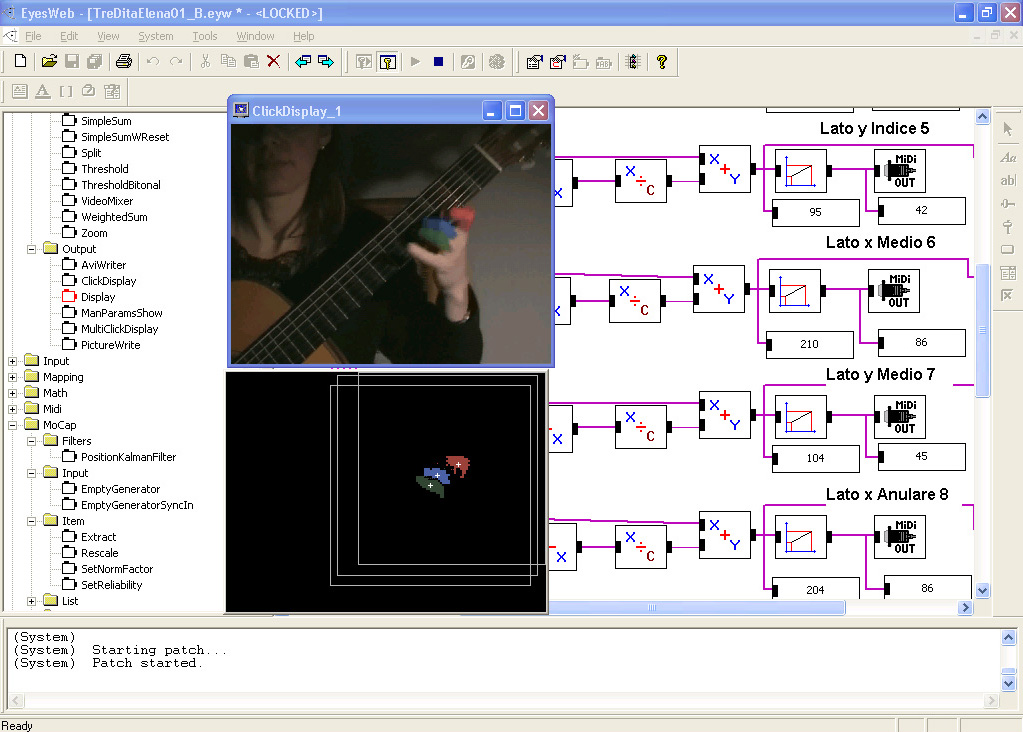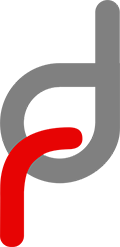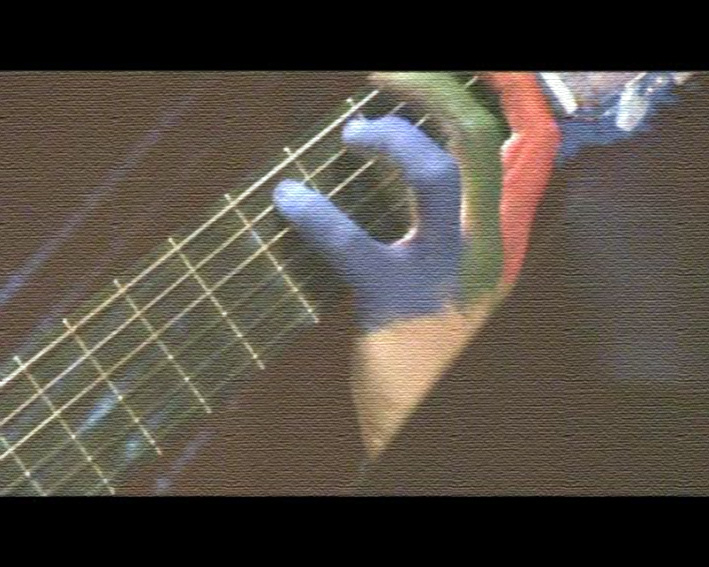(2001-2004) guitar, electronics and EyesWeb interactive system [25’]
Premiered at Hochschule der Künste, Bern, May 2005
Guitar: Elena Casoli
Sound projection and EyesWeb: Roberto Doati.
Realized with a Fellowship from Rockefeller Foundation
This project arises from an explicit request by the great guitar virtuoso Elena Casoli. For years we knew and watched carefully each other’s work. Finally, during a tournée in Argentina in October 1998, we decided to work together. The idea was to compose a series of short pieces to be performed separately, but musically tied together as they were parts of a single work. So I realized two different but complementary versions of this project. One version – just electroacoustic, so to be performed with CD player or digital audio tape – is made up with electronically transformed guitar passages recorded by Elena Casoli, while the second one is a live guitar version to be performed interwoven with the electroacoustic one, like in a mosaic.
Two matter of fact suggested me the choice of sound materials. First the greatest ease Elena Casoli plays so many different guitars during a concert: 6 strings acoustic guitar – plucking or palming – electric guitar, 10 strings guitar, 27 strings arciliuto. Second, her broad repertoire: from Gesualdo to the contemporary composers who wrote expressed pieces for her, passing through Berio, Boulez, Maderna, Scelsi, etc.
So I have chosen to work on sounds – and whole passages – from the literature of six different guitar “languages”: blues, baroque, flamenco, jazz, South American classics and rock, but also to work on the “colours” of different instruments: classic guitar, electric guitar, 10 strings guitar, arciliuto, all played in various ways – finger striking, pick striking, rabbing, tapping, palm muting, rasgueado, etc. Then these materials have been submitted to specific transformation classes such as time stretching, filtering, harmonizing, delay, space location – all of them realized by means of digital techniques – to obtain the electroacoustic version, and through a “translation” from the electronic results into conventional notation to reach the live guitar version. The purpose was to create a series of pieces that at certain moments evoke the six different guitar styles, and at several other moments deny them, therefore making the linguistic identification ambiguous.
Better than a confusing verbal description, I enclose here a clear graphic representation of the formal plan.
Electroacoustic version (to be performed interwoven with other composers’ work):

Electroacoustic version + live version:

Each part of the electroacoustic version (A, B, C, D, E) is formally articulated so that the short the part, the highest the density of guitar techniques and styles, while in each of the live parts (a, b, c, d, e) there is a deep concentration on a single style and/or techniques.

One relevant part of the project is the control of the live electronics part by means of an interactive system called EyesWeb. Realized at the Computer Music Laboratory of DIST – University of Genova, EyesWeb is a software with audio, MIDI and video input/output.
In the live version of L’apparizione di tre rughe the fingers movements of Elena Casoli left hand are followed by EyesWeb tracking the different colours they are painted. The fingers position on guitar neck are then translated into MIDI signals to control a set of Max/MSP patches to perform the live transformation on guitar sounds. The results in terms of articulation are much more “natural” than with a normal sliders MIDI controller, as they follow an unpredictable – but ruled – path such as the performer gestures. In the figure, a partial screenshot of the EyesWeb environment.
This has been already verified in a previous work of mine Allegoria dell’opinione verbale, a theatre piece where the actress lips are controlling the parameters for the synthesis of her own voice (as illustrated in an article published on the Scientific American Italian version: Francesco Giomi “Il computer nell’esecuzione musicale”, Le Scienze quaderni, n.121).

